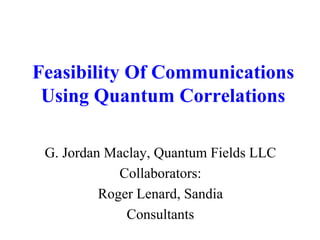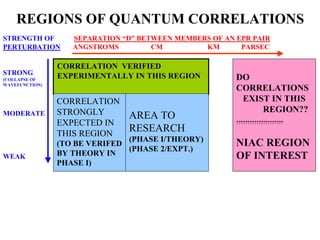This document discusses the potential for using quantum entanglement to enable novel communication techniques. Key points include:
- Entangled particles can exhibit non-local correlations even when separated, allowing potential advantages over traditional communication methods.
- Recent experiments have verified non-local correlations over distances up to 10km, but technical challenges remain in using entanglement for communication. Simply measuring one entangled particle does not convey enough information to the other.
- The document proposes approaches to modulate one entangled particle in a way that could be detected on the other, without disrupting the entanglement. This could enable communication if theoretical and experimental hurdles can be overcome.
- Further research is needed to understand how entanglement and correlations are
















